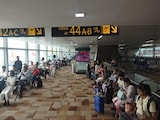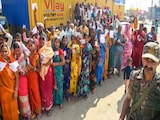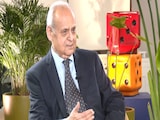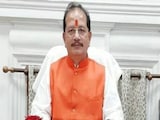The special session of parliament beginning Monday has generated much speculation. The media has been approaching the subject like the proverbial blind men and an elephant. An all-party pre-session meet to discuss the agenda is scheduled on Sunday. However, with the Narendra Modi regime's penchant for setting the pigeon among cats, conjectures persist.
September 18, the day the session starts, is the anniversary of the day in 1949 when the Constituent Assembly of India adopted clause 1 of Article 1: "India that is Bharat shall be a Union of States". As many as 222 amendments were moved before this was adopted. Amendment number 130, moved by HV Kamath, supported by Seth Govind Das and Kamlapati Tripathi, debated whether Dr BR Ambedkar's formulation of "India that is Bharat" ought to be reworded as "Bharat that is India".
Seth Govind Das cited Chinese traveller Huen Tsang, who had referred to "Bharat". Tripathi traced the name Bharat to Rig Ved. After animated discussion the amendment was negated. September 18, 1949 was a Sunday. The House met thereafter on October 6 to continue formulating the Constitution of India.
With the use of Bharat in official communication in G20, the discussion on 75 years of our democracy during the Special Session will be riveting.
Opinion on "Bharat" is sharply divided even today. On April 3, 1984, speaking to the only Indian who has thus far been to space, Squadron Leader Rakesh Sharma, Prime Minister Indira Gandhi had queried, "Upar se Bharat kaisa dikhta hai aapko?" He replied in Urdu:"Saare Jahan se achccha". After Chandrayaan's success, as India plans a manned space mission, this interaction and the use of "Bharat" assumes significance.
Ganesh Chaturthi, September 19, the second day of the session, is slated for shifting the working of the Houses of Parliament from the British-built circular edifice to the triangular new Parliament House, ushering a new era in our parliamentary democracy. This magnificent structure will thereafter be the venue for a conclave of G20 nations' legislatures in mid-October.
On May 28, the ninth anniversary of Narendra Modi's regime, the new parliament building was inaugurated. Seers from temples in southern India worshipped the Sengol (sceptre) with which Jawaharlal Nehru had symbolically accepted power on the eve of Independence, and which was resurrected from a museum in Allahabad.
Modi, accompanied by Speaker Om Birla, carried the Sengol and placed it on the right of the Lok Sabha Speaker's chair, symbolising the Raajdand (sceptre) of India's democracy. The Sengol, designed on a Chola era model, was suggested by new India's first Indian Head of State, Chakravarti Rajagopalachari, as the symbol of transfer of power in 1947. Nehru received it from seers prior to delivering his "Tryst with Destiny" midnight clarion. It disappeared from the public eye thereafter. It had been packed and stored in a museum in Allahabad along with Nehru's personal artefacts after his death in 1964.
This event serenaded the Ninth City of Delhi-successor to the British-built Lutyens' Delhi, known as New Delhi, which was the eighth after Qutubuddin Aibak's Mehrauli, Siri, Tughlaqbad, Jehapanah, Firozabad, Sher Shah Suri's settlements around Purana Quila and Shahjahanabad in recorded history( Delhi's history can be traced to Indraprastha of the Mahabharat era).
Since 2014, the task of eclipsing the British-era heritage of the city and the redevelopment of the Central Vista, the seat of the Government of India, has been handled by Housing and Urban Affairs Minister Hardeep Singh Puri. The Central Vista now wears a festive look; the footfall of local visitors and tourists has increased manifold.
The central avenue named Kingsway by Lutyens, changed to Rajpath in 1947; it was renamed Kartavya Path by Modi in September 2022. This avenue hosts the Republic Day parade.
Near the Kartavya Path, the offices of the central government in Jawaharlal Nehru and Lal Bahadur Shastri-era buildings, though majestic, are overcrowded and show signs of wear-and-tear. They are being replaced by state-of-the-art green buildings.
Many offices were housed in temporary hutments built during World War II when New Delhi was the Theatre Command for the East and Far East. These dingy, leaky, damp, hutments served as government offices from 1947, until Modi planned New Delhi's revamp.
Vanijya Bhavan, housing the Ministry of Commerce and Janganana Bhavan, the office of the census commissioner, and the new offices of the Ministry of Defence now dot the vista around India Gate.
Once the redevelopment project is completed, an underground circular railway will connect all government buildings, reducing the dependence on staff cars. Green technology is being harnessed not only in the buildings but also in providing an omnibus environment-friendly paradigm to the headquarters of the Government of India.
Apart from a new building for parliament and office blocks, new residence complexes for the Prime Minister and Vice President of India are under construction. Teen Murti Bhavan, which served as Jawaharlal Nehru's home, was converted into a museum in his name after his death in 1964. The PM house was located and relocated several times thereafter.
To ensure that no bungalows are converted into museums for remembering iconic PMs henceforth, a memorial complex for all Prime Ministers, past and future, has been set up in the Teen Murti complex by the present regime.
The new parliament project will also seat an expanded parliament (Lok Sabha will have 888 seats as against the present strength of 542 and Rajya Sabha is projected at 300+, 75 more than present strength). The delimitation of seats will be done after the next census, which has been delayed due to the pandemic.
Individual offices will not be provided to MPs-somewhat like the US Capitol - and professional facilities will be provided to elected representatives where they can interact with their constituents.Australia, Germany, abd UK are other countries where office accommodation and work facility is extended to MPs. A new paradigm for parliament is in the offing.
A negative feature of the new regimen will be the absence of a Central Hall of Parliament, where the accredited media freely interacted with those who stride the corridors of power.
A large part of Lutyens' Delhi, which may now well be called Modi's Delhi, is devoted to massive bungalows and multi-storied complexes to provide housing for MPs. In the days of the Central Legislative Assembly and the Constituent Assembly, members were mainly accommodated in transit accommodation in Janpath (then called Queensway). With the number of MPs projected to grow after the next delimitation of seats, the demand for such housing will grow manifold.
The Houses of Parliament meet for around 100 days in a year. MPs are needed in the capital for another 30-40 days for meetings of parliamentary committees. Is there a need to provide plush accommodation with attendant freebies to MPs whose presence is mandated in Delhi for less than 40 per cent of days in a year? In the initial years of the Republic most MPs kept their families in their constituencies. Their children attended local educational institutions. The present Delhi-isation of MPs ought to be reversed. This may be considered the next step in the slew of reforms unleashed by Modi since 2014.
(Shubhabrata Bhattacharya is a retired Editor and a public affairs commentator)
Disclaimer: These are the personal opinions of the author.














